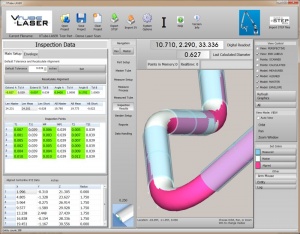Difference between revisions of "End-Scan Using the End Wall"
From ATTWiki
(→Another Way to Use This End-Scan Technique) |
(→Another Way to Use This End-Scan Technique) |
||
| Line 74: | Line 74: | ||
<tr valign=top> | <tr valign=top> | ||
<td width=300> | <td width=300> | ||
| − | * | + | * An alternative way to scan the end is to align the scanner so that it touches one end wall of the tube. |
| − | + | ||
| − | + | ||
The advantage of this method is that it is less prone to outlier points. The disadvantage is that it is hard to aim at thinner walls. | The advantage of this method is that it is less prone to outlier points. The disadvantage is that it is hard to aim at thinner walls. | ||
Revision as of 03:39, 1 February 2012
|
|
Why the End-Scan technique is important
|
This end-scan method is useful for increase in precision over the scissor method.
|
Measure Setup
|
How To Use This End-Scan Technique
The advantage of this method is that it is easy to use. The disadvantage is that it is more prone to outlier points from the inner diameter surface. |
Another Way to Use This End-Scan Technique
The advantage of this method is that it is less prone to outlier points. The disadvantage is that it is hard to aim at thinner walls. |
Other Pages
- See also End-Scan Using the Scissor Motion
- See also End-Scan Using End Targets
- Back to VTube-LASER



